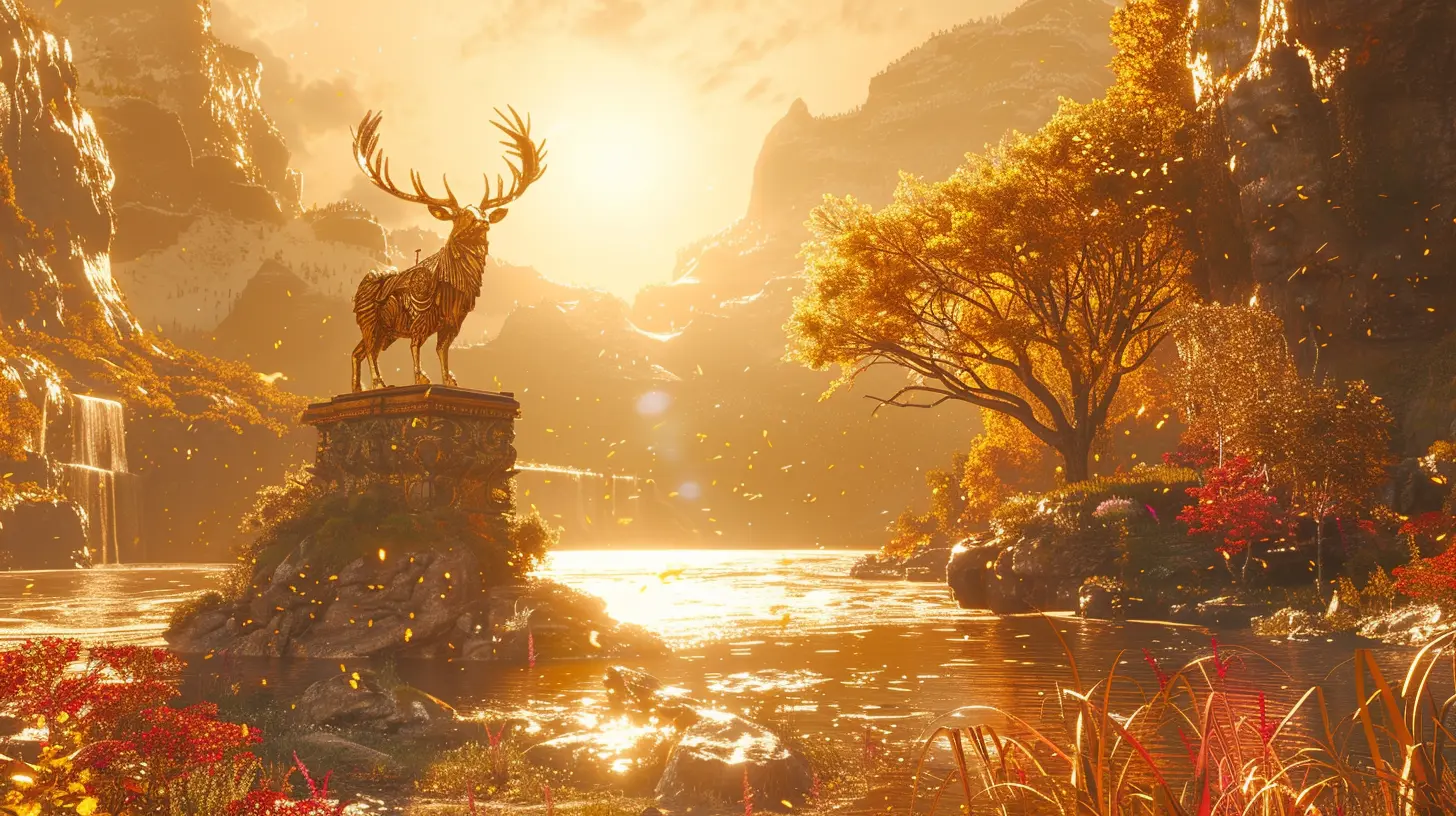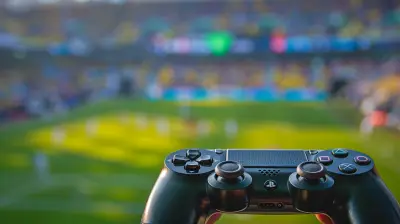Balancing Trophy Difficulty and Accessibility
28 September 2025
Let’s talk about something that every gamer—whether they're a platinum hunter or a casual afternoon quester—has thought about at least once: trophies and achievements. You know, those shiny pop-ups that reward you for finishing a story, slaying a boss, or doing something completely ridiculous, like punching 100 chickens in a row. (We see you, Easter egg hunters.)
But here’s the deal: not all trophies are created equal. Some are as easy as breathing, while others make you want to throw your controller across the room and renounce gaming forever. So how do developers walk the tightrope of balancing trophy difficulty and accessibility? And more importantly, what's the sweet spot that keeps both hardcore completionists and casual players grinning?
Let’s dive into this pixelated puzzle and sort through the boss battle of trophy design with a friendly pause menu.
Welcome to the Trophy Dilemma
Trophies can add an extra layer of challenge or just sprinkle some extra fun for players who want more than just finishing a game. They’re like digital stickers saying, “Hey, you did something cool!”But here’s the catch: If they’re too easy, they can feel pointless. If they’re too hard, they become a gatekeeping monster only a tiny percentage of players ever defeat. Cue the rage quits and the online rants.
So, how do devs find balance between challenging and achievable? That’s the golden question.
Why Trophies Even Matter
Before we try to balance them, let’s ask why trophies matter in the first place. Do we need them? Technically, no. But practically? Heck yes.They’re like optional side quests for our egos. They serve as:
- 🏆 Motivation to explore every nook and cranny of the game
- 🧭 A compass guiding players toward hidden secrets or alternate endings
- 📸 A way to show off online (“Look, I platinumed Dark Souls blindfolded. Respect me.”)
For some, trophies are the entire reason to play a game more than once. For others, they’re a fun bonus. Either way, they add flavor to the gameplay stew.
The Trophy Difficulty Spectrum
Let’s break down the range of difficulty:🟢 Easy — The Introductory High-Fives
These are your “Start the game” or “Finish the tutorial” trophies. These give everyone a little dopamine hit right off the bat. They’re welcoming. Friendly. Like the barista who remembers your name.🟡 Medium — The “Put Some Effort In” Trophies
Now we’re looking at stuff like “Complete all side quests” or “Defeat every boss.” These take dedication, but they’re still totally achievable with time and heart.🔴 Hard — The “OK, This Is War” Trophies
These are the beasts. Think: “Complete the game on Nightmare Mode without dying” or “Find all 100 invisible feathers scattered across a map the size of Texas.” They’re meant for the elite players who breathe pixels.Not every player wants to—or can—climb that mountain. And that’s perfectly okay.
Accessibility Matters… A Lot
Let’s not forget accessibility. Not everyone has the same abilities, time, or playing style. A well-balanced trophy list should include, not exclude.Why it matters:
- 🧠 Cognitive load varies from player to player- 🎮 Players with physical disabilities may struggle with intense reaction-based challenges
- ⏰ Not everyone has 100+ hours to sink into one game
Imagine locking the platinum trophy behind a 10-hour boss rush on ultra-hard mode with no saves. Who’s really gonna get that? Spoiler: not most of us.
Game devs need to walk a fine line between challenging and punishing. The goal? Design trophies that push players without shoving them off a cliff.
What Does a Balanced Trophy List Look Like?
Here’s where things get interesting. A trophy list that hits the sweet spot usually has a little something for everyone:✅ Easy wins to boost morale
✅ Moderate challenges to add depth
✅ A couple of spicy end-game goals for the trophy elite
✅ OPTIONAL grind-heavy or difficulty-spike trophies
✅ Accessibility options (e.g., assist mode, alternative challenges)
In other words: a well-balanced trophy list is like a good party. There are snacks for all diets, music for all tastes, and no one feels left out.
Examples of Good Trophy Balancing
Let’s give credit where it’s due. Some developers really nailed the trophy game.🎮 Spider-Man (PS4)
Insomniac Games gave us a list that says, “Go have fun, and here’s a shiny trophy for doing cool stuff." It encourages exploration, doesn’t over-rely on collectibles, and has a platinum that feels earned, not exhausting.🎮 Horizon Forbidden West
Great pacing. Diverse trophies. Some are story-based, so everyone grabs those. Then you’ve got challenges that invite (but don’t force) extra effort. It feels rewarding without being ridiculous.🎮 The Last of Us Part II (Post-update)
Initially tricky, but Naughty Dog added accessibility options that made the platinum far more achievable. Big props for that.When Trophy Design Goes Sideways
Now, not naming names (cough early Assassin's Creed games cough), but some games fell into the trap of ridiculous grind-fests.You know the kind:
- “Collect 200 of this useless item.”
- “Replay the same mission 50 times for randomness to bless you.”
- “Get #1 on worldwide leaderboards.” (Um, what?)
These trophies don’t just test skill—they test patience. And sometimes, sanity.
If a trophy makes players resent the game, it’s missed the point entirely.
How Devs Can Balance Better
Here’s a rapid-fire checklist for developers designing trophy lists:1. Know Your Audience
Are your players mostly casual? Hardcore? A mix? Build a list that pleases the core but accommodates the edges.2. Mix It Up
Diverse trophies = happy players. Include variety: combat, collecting, exploring, story progression, etc.3. Don’t Gatekeep
Avoid overly exclusive goals. Optional extreme challenges? Fine. But don’t make them mandatory for platinum.4. Use Assist Modes Wisely
Think Celeste-style. Let players tailor the challenge. Give them the tools without taking away the essence of the accomplishment.5. Communicate Clearly
Nothing worse than a trophy with vague requirements or hidden conditions. Gamers shouldn’t need a wiki just to unlock one.What Players Can Do, Too
Alright players, you’ve got a role here too. Balancing isn’t just on the devs.Be vocal (but polite).
Got thoughts on trophy design? Share them! Devs listen more than you think—especially when you’re constructive.Choose your battles.
Not every game needs to be 100% completed. Pick your platinums wisely. It’s okay to let one go.Support accessible games.
Buy, stream, and promote games that care about inclusivity. It sends a message: “Hey, this matters.”In Defense of Ridiculous Trophies…
Okay, we’ve dunked on the hard ones a bit. But let’s be real… there’s something undeniably thrilling about nabbing a nightmare trophy.It’s the Mount Everest of gaming. You know you’re not doing it for external validation—you’re doing it because you know you did it. And that’s powerful.
Just… maybe let the rest of us chill in the village below the mountain, yeah?
Final Thoughts: Don’t Let the Trophy Define the Fun
Trophies should add to the experience—not become the whole experience. Whether you’re collecting every fish in a peaceful farming sim or surviving an onslaught in a rogue-like, the joy should come from playing, not just unlocking.Games are meant to be fun—not second jobs. So if that platinum’s making you frustrated or miserable? Take a step back. Play for joy, not just for the chime.
Let’s encourage developers to keep trophies balanced, accessible, and most of all, fun for everyone.
And hey, even if you never get that last elusive trophy, remember this: You're still a champion of fun. And that’s the biggest win of all.
all images in this post were generated using AI tools
Category:
Trophy HuntingAuthor:

Leandro Banks
Discussion
rate this article
1 comments
Kael Long
Great insights! Balancing trophy difficulty with accessibility is essential for a more inclusive gaming experience!
September 29, 2025 at 3:07 AM

Leandro Banks
Thank you! I completely agree—striking that balance is crucial for creating an inclusive gaming environment.


